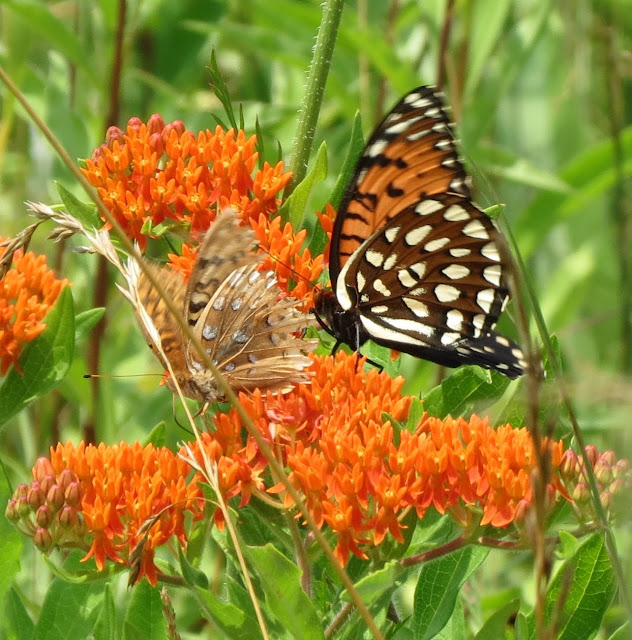Easily the most recognizable butterfly in the United States, our population of migratory Monarch butterflies is in deep decline. Not only are they suffering dramatic losses on their wintering ground in Mexico, our farm practices are decimating their chances for reproduction in the mid-west.
Monarchs must have milkweed plants, and modern farming with herbicides, pesticides and fungicides have nearly wiped out Ohio's milkweeds, thereby striking a death-blow to Ohio's Monarchs.
 |
| Regal Fritillary nectars on Butterfly-weed milkweed (Pennsylvania.) |
Prairies, filled with native grasses and flowering plants -including milkweed- were once abundant in Ohio. However, we have lost 99.9 percent of Ohio's prairies to "progress", just as agriculture and urbanization have claimed most prairies elsewhere in the mid-west and west.
If we have lost 99.9 percent of our prairies, is it any wonder that we are losing our "prairie butterflies" as well?
Prairie soils are perfectly suited for crops of another grass: maize, or our modern day corn. Unfortunately modern chemicals "weed" out the milkweed, unlike the corn fields* of my childhood Ohio. Milkweed used to readily grow along the field edges and in the ditches along the road. Now, it is only found in abandoned lots and butterfly gardens.
*The corn in my neighborhood is also terrifyingly silent this year. Where are the crickets, grasshoppers, katydids and bees of my youth? Monarchs may only be the first blow to the eco-systems in our region.
 |
| Monarch caterpillar feeds on Common Milkweed in Richland County, Ohio. |
No milkweed- no Monarchs.
 |
| Bon voyage! Safe journey to Mexico! |
Most years in the past, many, many Monarchs have fed upon the nectar of milkweeds and laid eggs on my pesticide-free milkweeds. This year, I have seen only two caterpillars. I raised both of them indoors, away from predators. Normally, I let nature take care of her own, but this year the Monarchs seem to need every break we can possibly give them, if we hope to have migrating monarch for future generations. We may feel helpless to change the way farmers manage their lands, but we can still make a difference if we all do two very simple things.
1. Plant more milkweed in our yards and gardens.
2. Stop using pesticides, fungicides and herbicides on your lawn and landscape. It can be done, and you and the butterflies will be healthier for it.
Changing your own yard is the first step to changing the world.





well said, Cheryl!
ReplyDeleteCheryl,
ReplyDeleteI have seen no confirmed sitings of Monarchs at Gorman Nature Center this year. That includes caterpillars. We have ample milk weeds which are not treated in any way. I missed the Monarchs. The milk weeds are currently being used by the eight-spotted forester moth caterpillar. At least they are not totally going to waste.
Regards,
Larry